About the 3,200
Residents Surveyed
Last year’s Holomua Collective Affordability Survey found that many Hawaiʻi residents were struggling to stay in the place they call home, even those earning middle to upper-middle incomes. In 2025, the survey captured a broader swath of the local workforce, with more than double the number of survey respondents. The findings paint a stark picture of a worsening cost-of-living crisis in the state, with more respondents living paycheck to paycheck and spending unsustainable portions of their household income on essentials like housing and transportation.
Many of the residents we surveyed are:
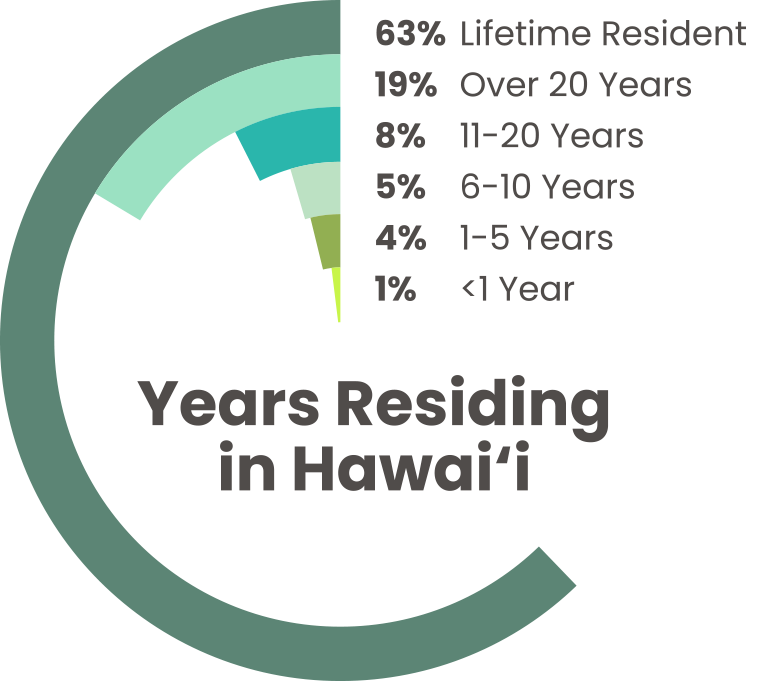
Years of Residency
More than half (63%) of respondents are lifetime residents of Hawaiʻi, similar to 2024 survey respondents (61%).
Understanding the experiences of locally employed residents
We surveyed 3,241 employees from 25 local for-profit, non-profit, and public sector employers. Our goal? To understand their situations and share their stories. By shedding light on their experiences, we can clarify the changes needed to keep these community members here in Hawai‘i.
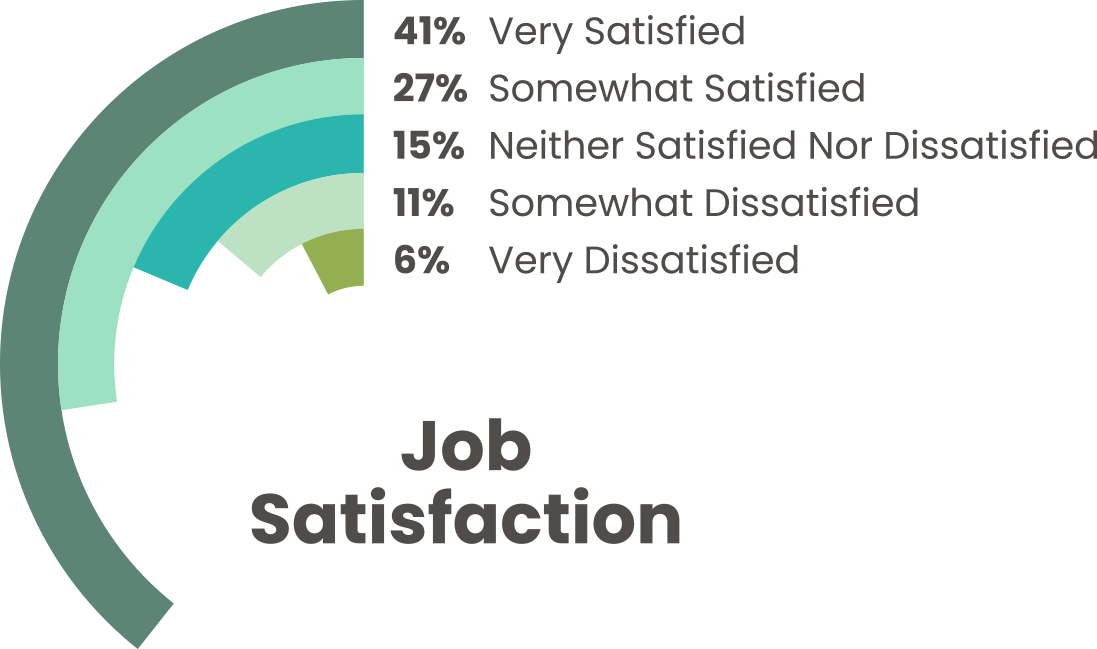
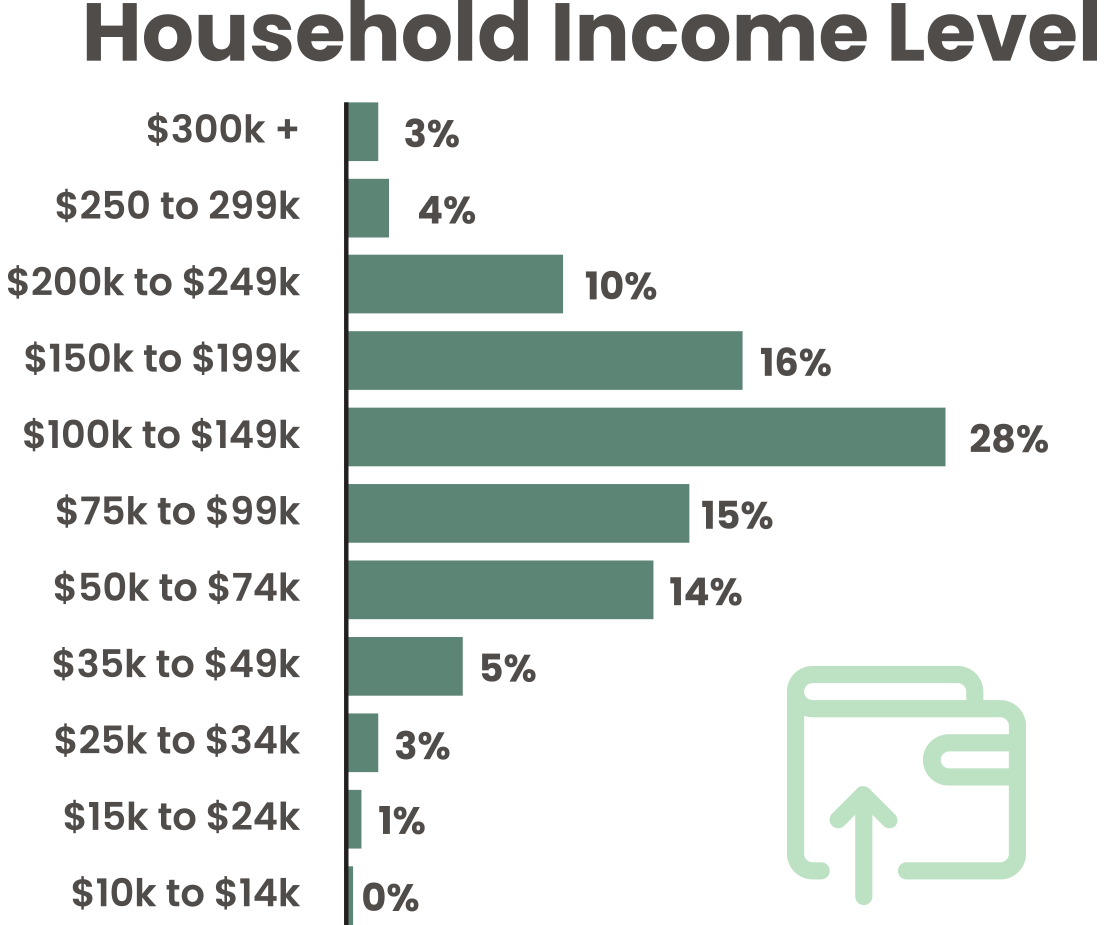
Household Income and Size
More than half (61%) of respondents come from households earning at least $100,000. The prevalence of upper-middle-income respondents is consistent with the 2024 survey findings (64%). As in 2024, the median household size was 3, with households commonly having two household members employed full-time.
Hawai‘i’s Middle-Income Workers Weigh Leaving
As economic pressures mount, a staggering 75% of respondents say they will – or are unsure if they will – relocate in the coming years, an increase from 70% of respondents in 2024.
The likelihood that a household will have to leave the state is significantly tied to their income. Households earning more than $150,000 annually are less likely to say they plan to relocate, while households below this income threshold are more likely to move away. In 2024, the decrease in the likelihood that a household will relocate began at the $100,000 mark, suggesting that, in the year since, Hawaiʻi’s cost-of-living pressures have further encroached on higher income brackets.
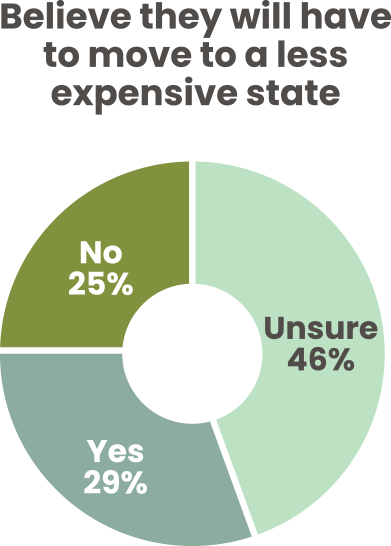
“…As of now, I’m basically just trying to save enough money to afford the move off of Hawaii. Zero change in over a decade when it comes to the housing crisis and wage disparity.”
“It tears me up that I have to leave again…”
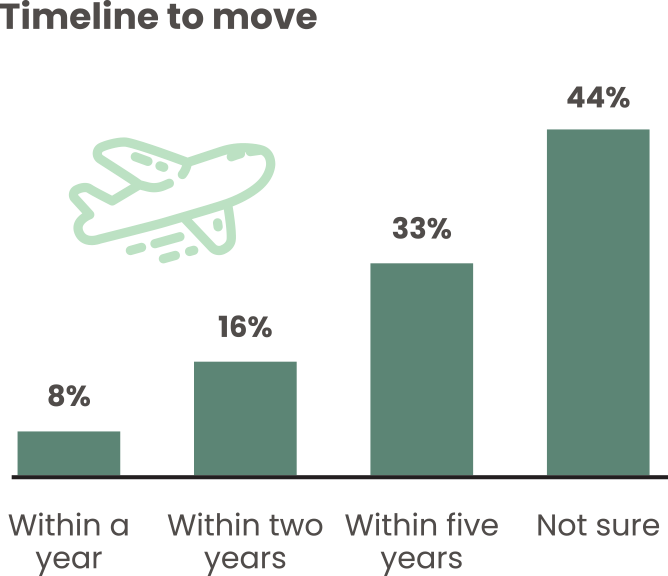
Timeline to Move
Of respondents who say they will have to leave Hawaiʻi, nearly half (44%) are not sure when they will be moving away. A third (33%) plan to move within five years, 16% within two years, and 8% within a year.
One thing you could change to make it possible for you to stay in Hawaiʻi
In an open-ended question, respondents who indicated they will have to move to a less expensive state or are unsure if they will have to move to a less expensive state were asked what they would change to make it possible for them to stay in Hawaiʻi. The top issues respondents would change are wages to match Hawaiʻi’s cost of living (26%), followed by basic needs and economic stability (24%), and housing affordability (24%). Fourteen percent (14%) of respondents cited the need for political and legislative actions, such as lowering taxes. Six percent (6%) of respondents specifically indicated that the ability to own rather than rent a home would make it possible for them to stay in Hawaiʻi.
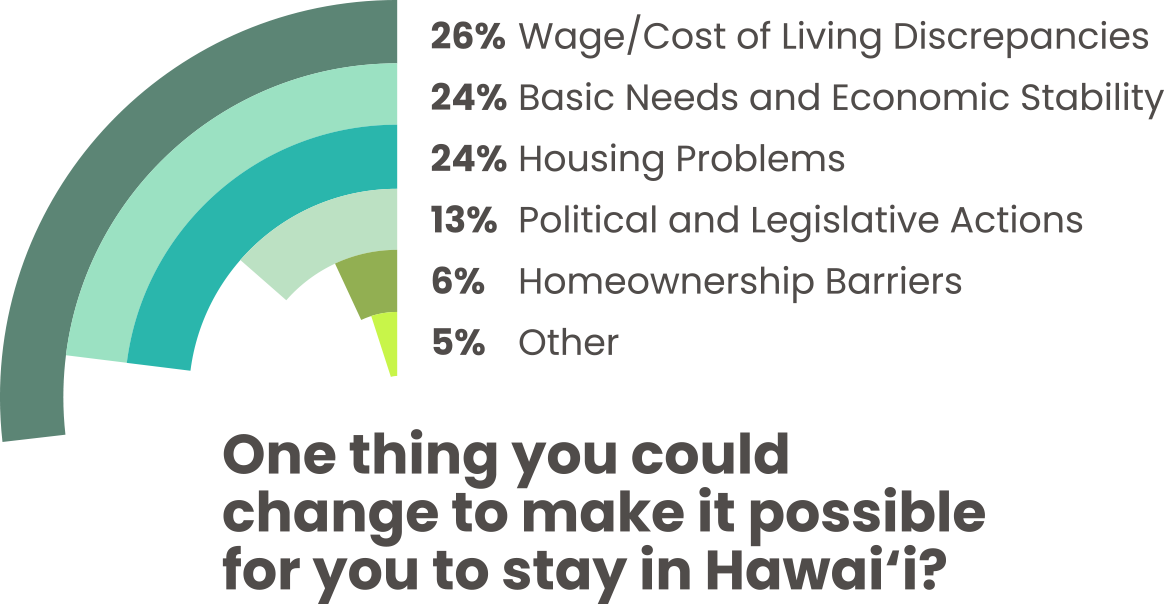
The ranking of these issues is similar to the 2024 responses, with wage/cost of living discrepancies, basic needs and economic stability, and housing problems comprising the majority of responses. However, political and legislative actions was a notably more common response in 2025 (14%) than in 2024 (4%).
If you could change one thing to make it possible for you to stay in Hawaiʻi, what would it be?
Housing is far and away the biggest expense for local families, and respondents are sacrificing to stay in Hawai‘i.
Housing remains the biggest expense for local families, and more respondents in 2025 are burdened by their housing costs than in 2024. To better understand respondents’ financial situations, we asked them about their paycheck allocation across different categories, their difficulty in saving from their paychecks, the likelihood of skipping bills to cover other expenses, and their methods to stretch their dollars. The data illustrates the immense pressures that Hawai’i’s rising cost of living is exerting on local households.
Top Factors Affecting Cost of Living
Consistent with the 2024 survey findings, respondents said housing has the biggest impact on cost of living in Hawaiʻi. Over half (55%) of 2025 respondents ranked housing as the number one factor impacting cost of living in Hawaiʻi, while 88% of residents ranked housing as one of the top 3 factors impacting cost of living.
Wages were the second-ranked factor in both years, but taxes replaced the cost of food as the third most significant factor in the most recent 2025 survey.
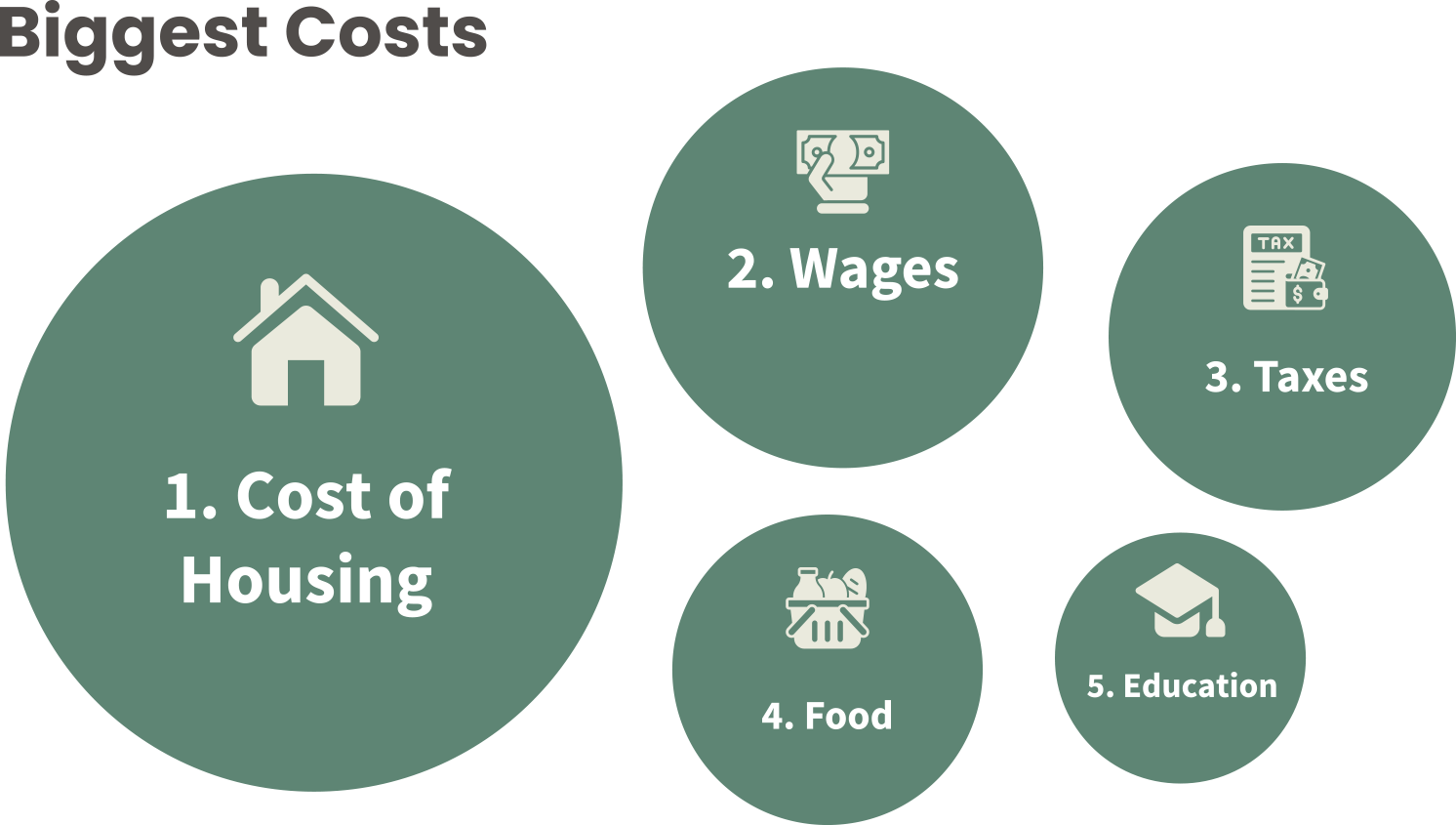
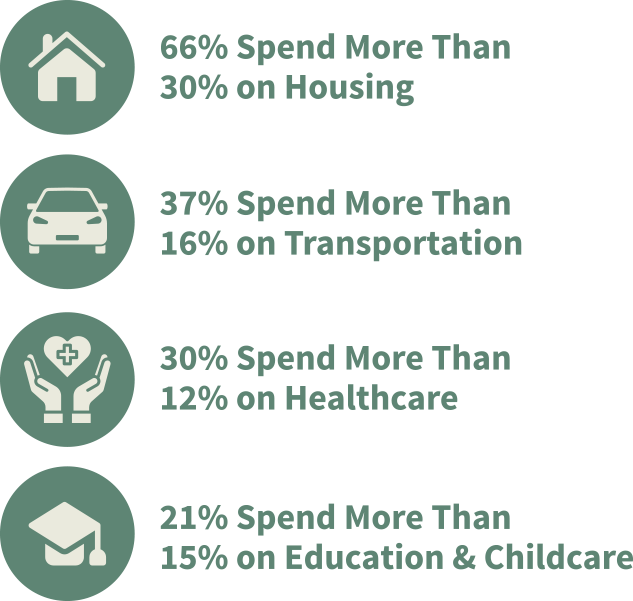
Expenses
In 2025, more respondents are spending higher portions of their income across all categories of essential living expenses—housing, transportation, healthcare, and education/childcare. This suggests that, over the last year, respondents’ incomes have not increased enough to keep pace with Hawaiʻi’s rapidly climbing cost of living.
Ability to Save Money from Paycheck
Given the increased cost of living, more respondents are living paycheck to paycheck. In 2025, 42% of respondents said that it is “very difficult” to save money from their paychecks, compared to 34% of respondents in 2024.
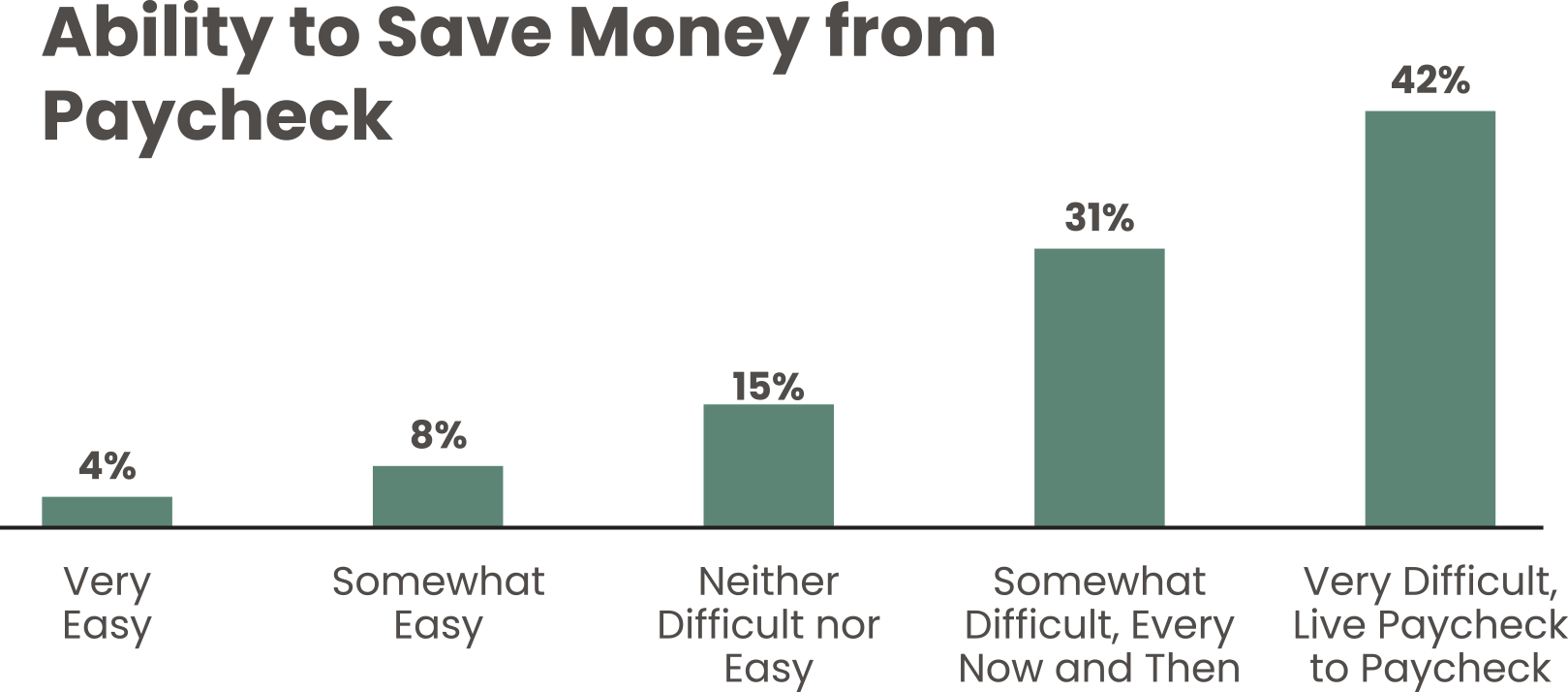
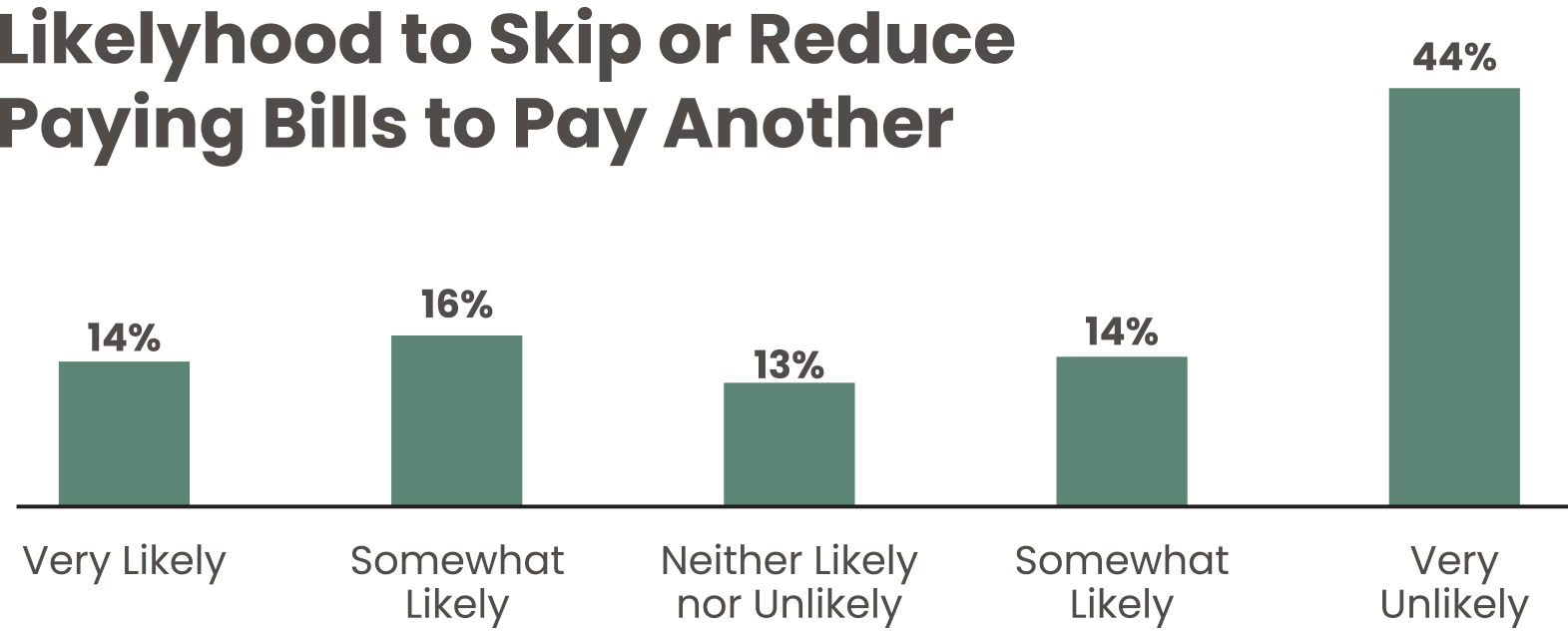
Likelihood to Skip or Reduce Paying Bills to Pay Another
Fourteen percent (14%) of respondents in 2025 said they are very likely to skip or reduce paying one or more bills to pay other bills they consider more important – a slight increase from 11% in 2024.
Worry About Not Being Able to Pay Monthly Bills
More than one-third (37%) of respondents said they worry “frequently” or “almost all the time” about not being able to pay their monthly bills – up from 28% in 2024.
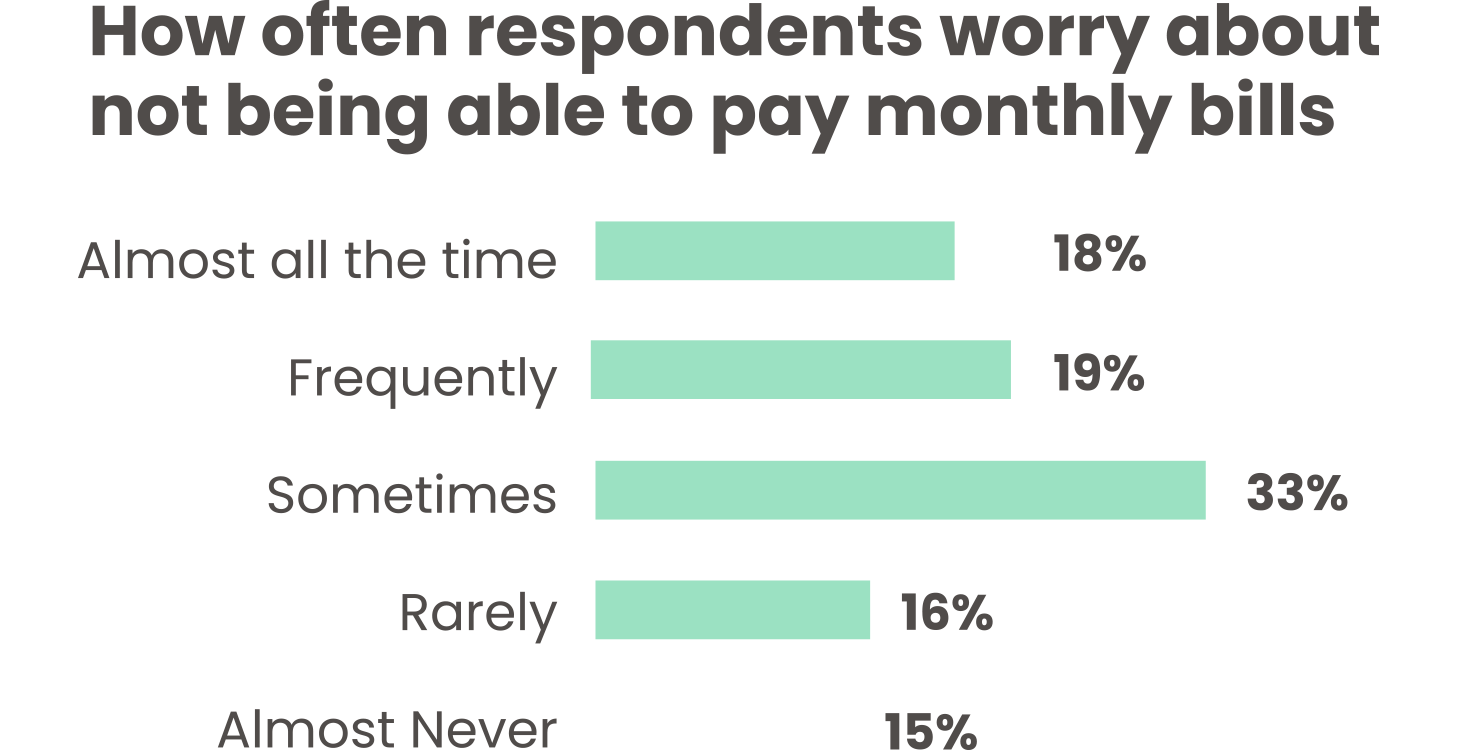
What methods do you use to stretch your paycheck?
Hope for Homeownership in Hawaiʻi
Hope for Homeownership in Hawaiʻi
Non-homeowners were asked how hopeful they are that they will be able to own a home in Hawaiʻi in the next five years. More than two-thirds of respondents (67%) are unhopeful they will be able to own a home in Hawaiʻi, with 50% feeling very unhopeful. Notably, households that say they will have to relocate to a less expensive state are more likely to be unhopeful about their homeownership prospects compared with households that say they will not have to move away.
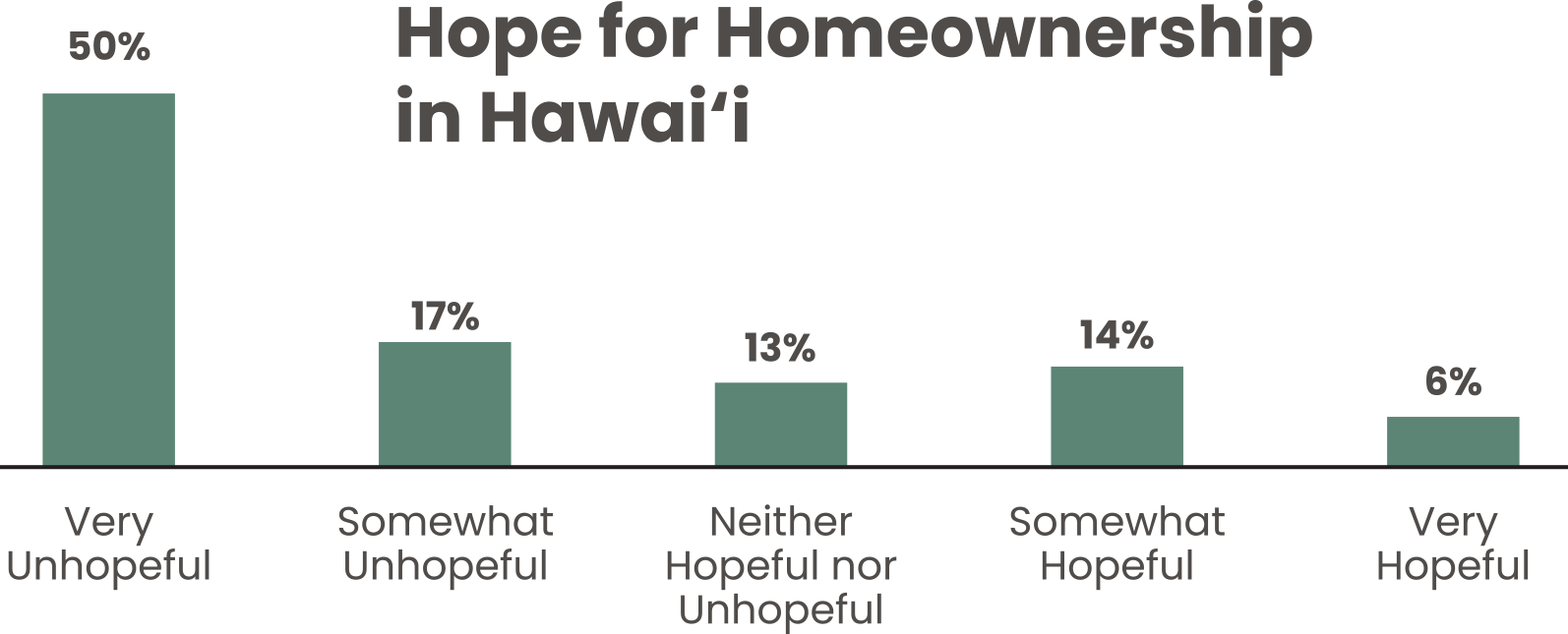
At the same time, support for solutions is near-unanimous. 90% of residents agree Hawaiʻi must build housing for local people, with the strongest agreement among younger adults and households at risk of moving.
“The housing market would need to change. Homes are way to expensive and very small. Local families are large and we want to stay. Why would I keep my family in a shoe box when I could go to Las Vegas where many local families already live and create a life there with more opportunity. “
“Access to a more controlled housing market that benefits locals and is not subject to normal investment/market fluctuations. I think if certain government workers (teachers, some civil service) had dedicated housing, it would make it easier for folks to stay and save up for a potential home of their own.”
“While there are many things that would need to change in order for me to realistically stay in Hawai’i, it ultimately comes down to housing. The market has become almost impossible for the average local resident to break into – with run-down, dated homes starting at $800,000 or more and often requiring extensive repairs. Rent for a modest studio apartment averages around $1,800 a month, not including utilities or extra parking fees, which quickly drives the real monthly cost even higher. Even at what many would consider a solid wage of $25 an hour, the math simply doesn’t work. Residents are forced to take on multiple jobs, move in with several roommates, or continue living with family if they have the opportunity to do so. For those without these safety nets, the choices are limited – live in substandard conditions, leave the islands altogether, or face the growing risk of homelessness. Without meaningful changes to make housing attainable and affordable for local people, it will be nearly impossible for many of us to envision a stable and sustainable life here in Hawai’i. And realistically, nothing will change soon enough to convince me or many other locals to stay.”
Consistent with 2024 survey findings, respondents remain in agreement that Hawaiʻi needs to do more to recruit and retain critical workforce members, build housing dedicated for local residents, and increase access to childcare and education for children ages 0-5.
Over 80% of the respondents agree that Hawai‘i needs to…
91%
Do more to recruit and retain critical workforce members (educators & healthcare workers)
90%
Build housing dedicated for local residents
81%
Increase access to childcare and education for children ages 0-5
Local Businesses and Jobs: Limited Pathways
The employees who keep Hawaiʻi’s economy running — across the nonprofit, for-profit, government, and labor sectors — are raising serious concerns about opportunity and the future.
Only 19% believe Hawaiʻi is a good place to do business. And while wages are the second biggest driver of cost of living after housing, just 36% say there are enough pathways to living-wage jobs. Awareness of workforce development programs is especially low among younger adults — the very people who should be building careers here.
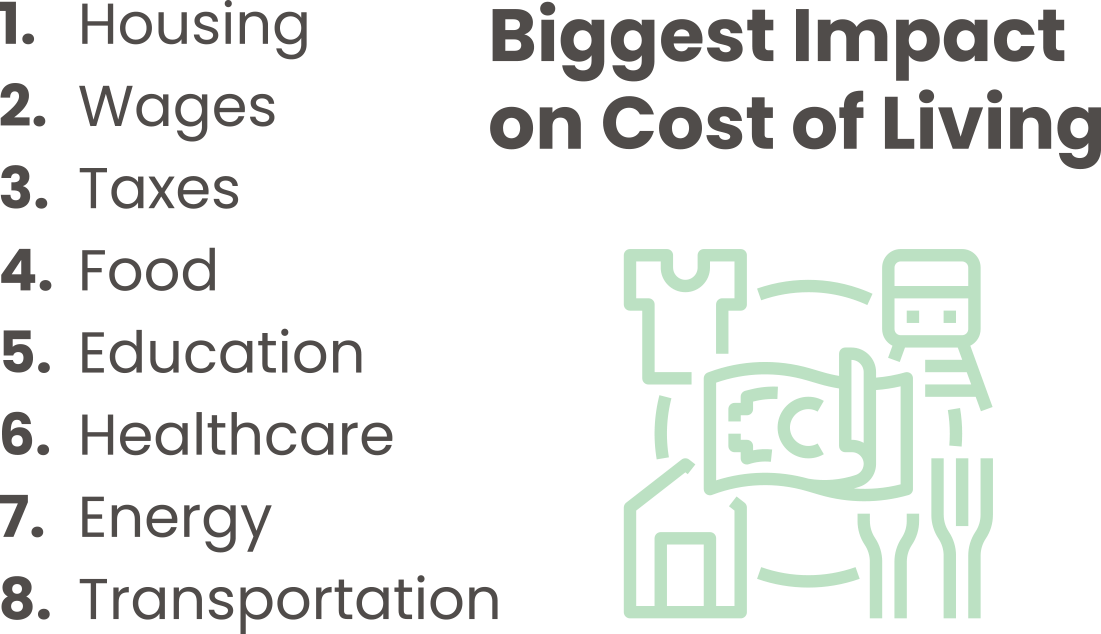
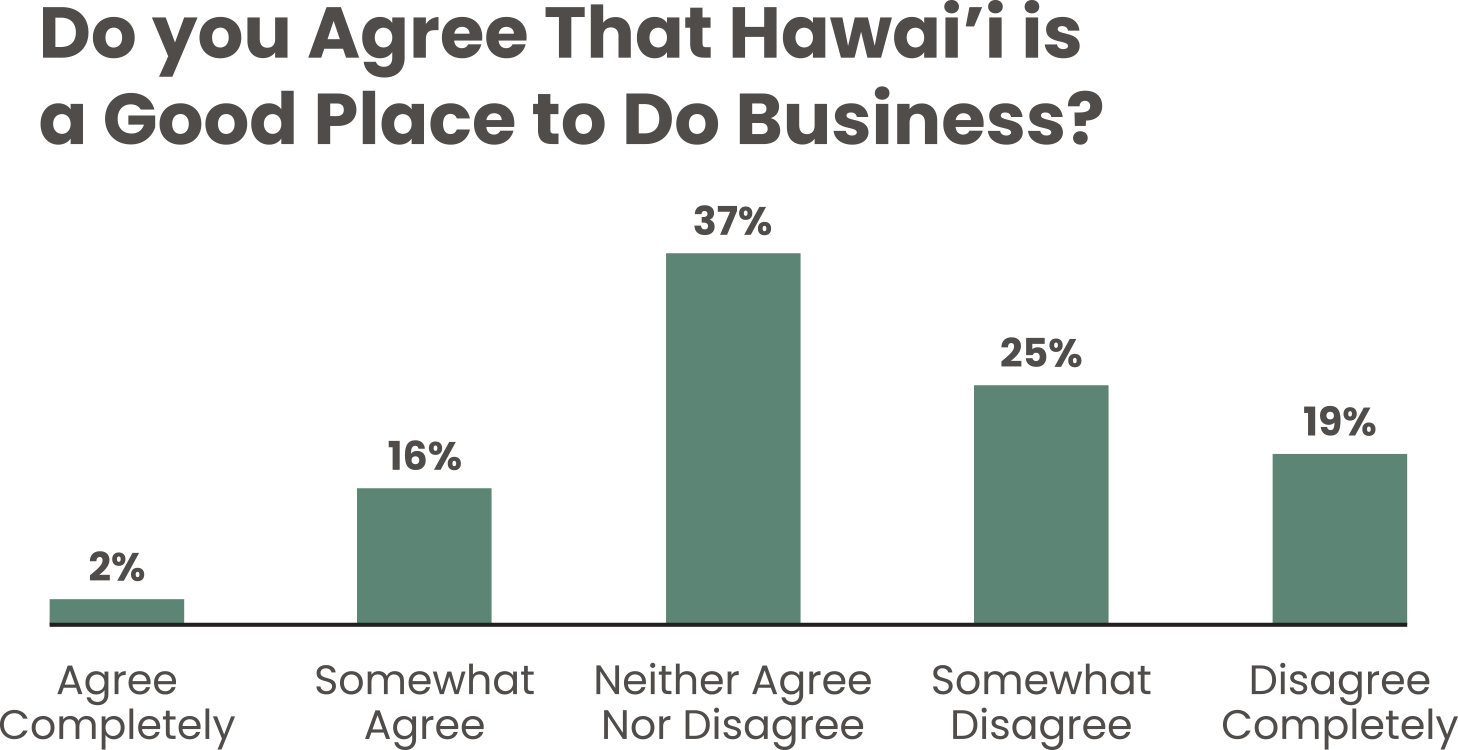
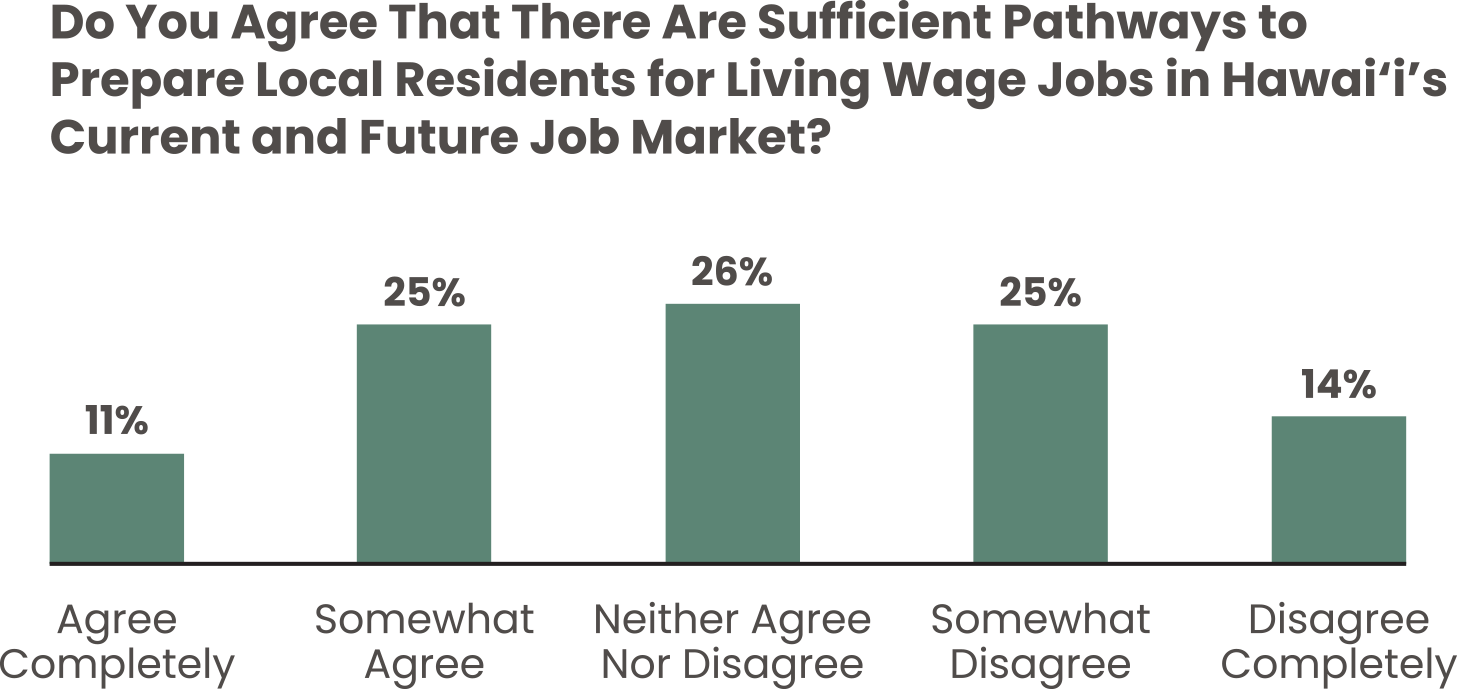
Families are also looking ahead with unease. Many doubt their children will be able to remain in Hawaiʻi, and those planning to move within a year are twice as likely to say career pathways don’t exist.
Taken together, this paints a troubling picture: a workforce that employers and communities rely on every day, but that may not be here much longer unless bold changes are made.
In the 2025 survey, respondents were asked to describe their confidence in local institutions – including government, labor unions, the business community, non-profits, and the public school system – to do right by Hawaiʻi’s working families.
Respondents expressed the highest level of confidence in local non-profits (54%), followed by the local business community (39%), while only 20% said they have a fair amount or great deal of confidence in state and local government to do right by Hawaiʻi’s working families.
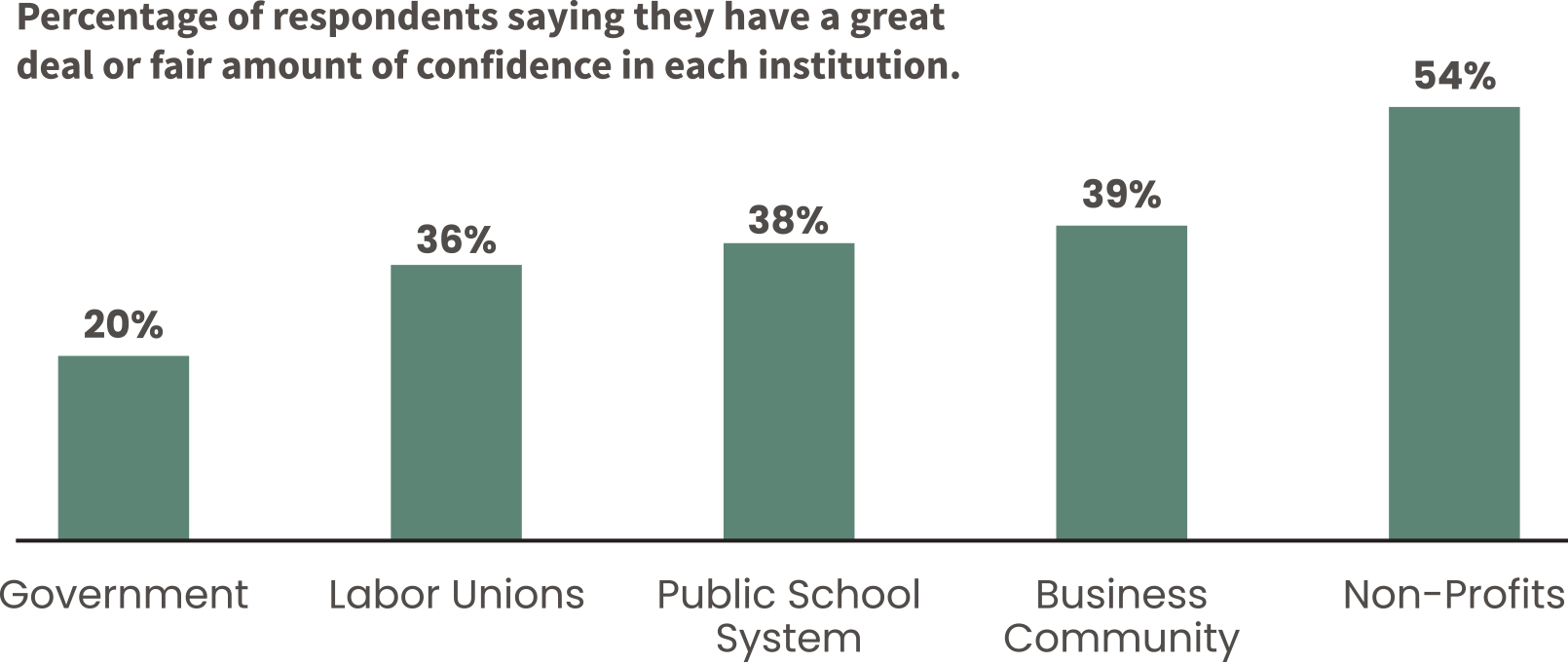
Respondents’ perceptions of the local business community are impacted by the number of jobs they work, as well as their job satisfaction. Respondents who work multiple jobs expressed lower confidence in the local business community to do right by local working families, while respondents who are satisfied with their primary job and would recommend their employer to others are more confident.
With confidence spread thin across all sectors, progress will depend on collaboration. No single institution stands out on its own — but working together, nonprofits, businesses, government, schools, and unions have the ability to create solutions that support working families.
Looking Ahead
The results of this year’s survey sends a clear message: Hawai‘i’s working families are strained, and the pressures that once pushed only the most vulnerable are touching households across income levels, job types, and islands. Our working families need hope they can stay.
This data shows us where change is most needed, and where solutions can make the greatest difference.
The voices of Hawai’i’s working families are what guide Holomua’s focus for 2025–2026.
- Providing hope that families can stay in Hawai‘i by establishing a sustainable housing market dedicated to local working families.
- Providing hope that local people and local businesses can thrive by clearing barriers that have slowed us down and designing sustainable systems to:
- Grow career pathways and pay.
- Create a healthier environment for local businesses.
- Connect Hawai‘i’s talent to opportunity.
Demographic Insights: Profiling Hawai‘i’s Workforce Across Diverse Sectors
AE Consulting surveyed employees of 25 local for-profit, non-profit, and public sector organizations. The organizations ranged in size from less than 10 to over 16,000 employees. The organizations involved cover a wide range of areas, including energy, building, retail, finance, government, and more.
The majority of respondents are middle-aged (35 to 54 years old) and predominantly women (52%). Most respondents have a college degree or post-graduate degree (63%). Households commonly have two full-time employed individuals (49%). Income levels vary, with 61% earning $100,000 or more, indicating a high representation of middle to upper-middle income earners.
A large portion of respondents are long-term residents, with most being lifetime residents (63%). Eighty-nine percent of respondents are registered voters, and 91% voted in the last election. High voter registration and participation rates indicate strong civic engagement among the respondents.
